When I first heard about the XTAR VP1 charger for lithium batteries, I just had to experience it.
XTAR entered the charger market a couple of years ago and their methods of using the correct charging algorithms quickly caught the attention of battery snobs. In charging lingo, it’s all about using CC/CV (constant current/constant voltage) to ensure your lithium-ion batteries get the proper nourishment.
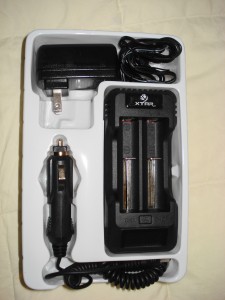
When you open the VP1 box, here’s what you see;
AC adapter – Charger – Car adapter
What separates the VP1 from other similar chargers is the large illuminated display;
The Charge Settings
In the photo, the display is indicating 250 milliamp-hours (mAh). The button above the display is used to change this setting. With each press, the display will go from .250 to .500 to 1.000 mAh. The CH1 & CH2 notation on either side of the button indicates the battery slot above. It’s important to note that while each slot operates separately, only ONE setting can be selected for each charging session. This means that if you’re charging two cells at once, they both must charge at the same current. This is VERY important when knowing which type of lithium battery you’re about to charge. The instruction booklet gives a handy guideline on it as well.
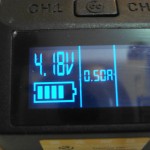 The next photo displays a single battery being charged. When a battery is inserted, the display will indicated its current voltage, then charging will begin with the capacity icon below. As charging commences, the voltage will continue to rise. To the right, you can see that the setting is at .500 mAh.
The next photo displays a single battery being charged. When a battery is inserted, the display will indicated its current voltage, then charging will begin with the capacity icon below. As charging commences, the voltage will continue to rise. To the right, you can see that the setting is at .500 mAh.
This photo illustrates two cells of similar capacity charging at once. The left cell is a 16340 (RCR123) and on the right is a 14500. Both these lithium batteries must NOT charge at a higher current than .500 mAh. The lowest setting is also acceptable, but charging will take longer. The highest setting would be too much current for these cells. Typically, the 1000 mAh setting is used for the much longer 18650 cells. Read this article to learn more.
Here’s the display with both cells inserted. By the display bar, you can see that a complete charge is close. Most lithium cells (those that operate at 3.7 volts) will often charge to just above 4.20 volts. The display won’t go above 4.20 but when charging is finished, it will display the current cell voltage.
The Final Voltage
This image is displaying both cells after charging has completed. The 16340 cell on the left is not of stellar quality and never charges much above 4.10 volts. So the 4.09 reading is correct. When the photo above it was indicating 4.20, this was when the cell was actively charging and by default, the unit displays a “full voltage” reading, even if in truth, that’s not where it will settle to, once charging has ceased. Meanwhile the 14500 on the right, has finished at 4.18 volts. These are both correct readings, and best for the battery in terms of longer life. Lithium batteries shouldn’t be regularly charged above 4.20 volts. A charger like the XTAR VP1 knows this, and won’t intentionally “bake” your cells like a lesser known, less expensive unit. While these batteries were charging, they were barely warm. That’s the way it should be.
Concluding Thoughts
The VP1 charger is an excellent compact unit. The spring slots adjust to even the longest 18650 batteries and move smoothly. Flat top batteries are not a problem. Little rubber feet hold the charger in place when on a smooth surface. When charging is finished, a “trickle-charge” will be imposed. But as always, it’s recommended to remove the cells from the slots as soon as you can.
The main advantage of the XTAR is the ability to select the current. Other units will take a medium range, such as 650 mAh, and charge each cell the same. Although not damaging for the cells pictured in this article, their overall life expectancy could be shortened if repeatedly charged above the recommended limit. Similar with most other units, the XTAR accepts a wide variety of rechargeable lithium battery sizes. As I also recommend the PILA charger and others from Nitecore etc., I’m recommending the VP1 mainly due to its versatility with regards to the illuminated display.
Questions or comments on this article…or the VP1 in general? I’d love to hear from you!
To read other user comments (and/or for a purchase link) click here!





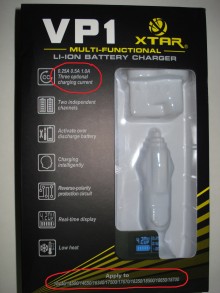

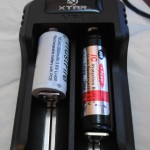
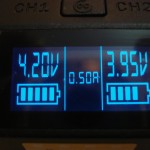
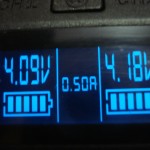
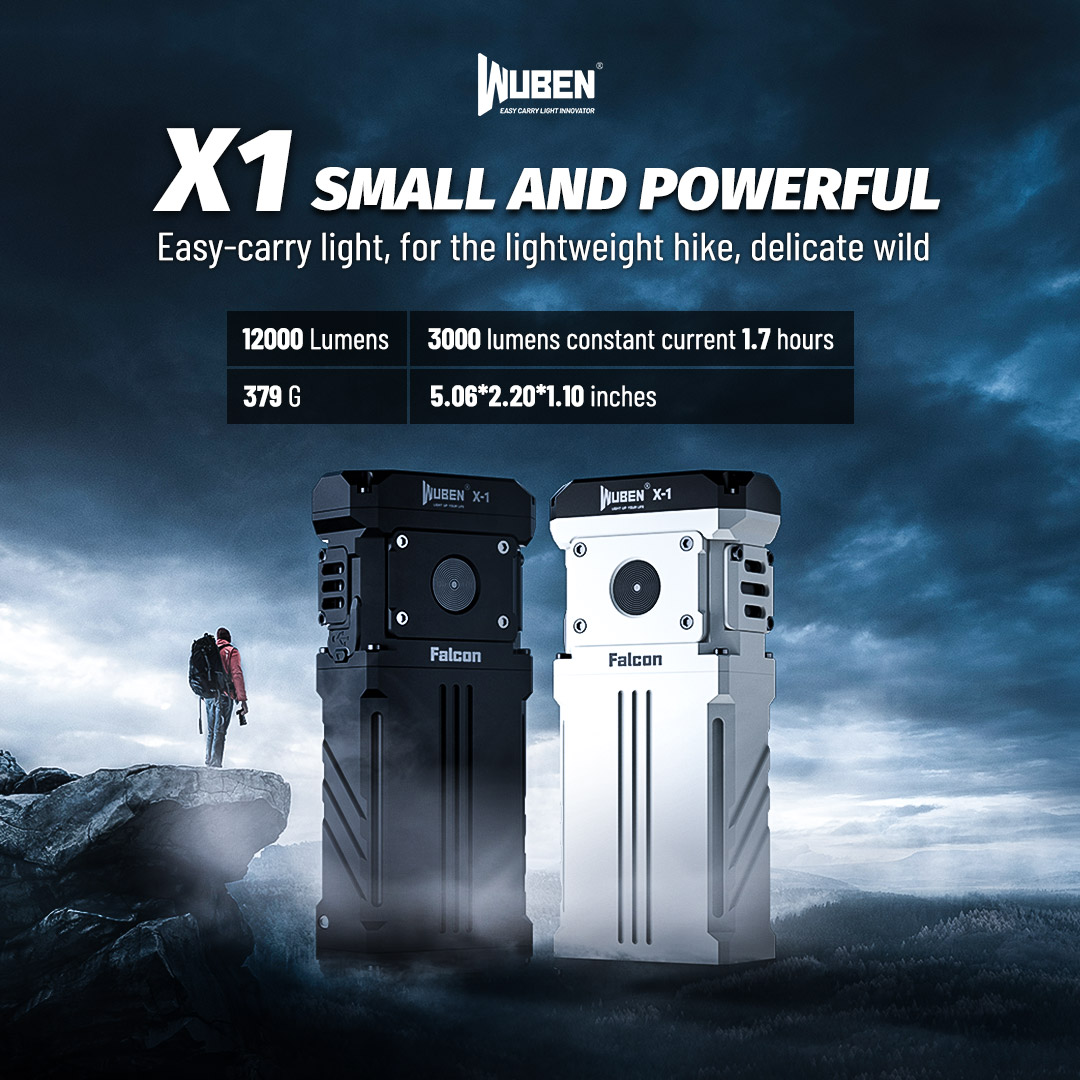
I want to have as few power supplies for my devices as possible. So, what is the pin/barrel configuration (ie 2.1mm X 5.5mm)? Can I safely use a 12 volt, 4 amp “smart” power supply with the XTAR VP1?